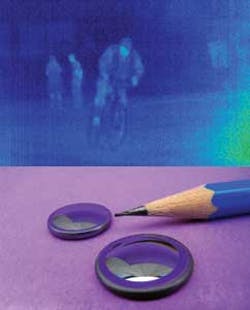Inexpensive IR lenses could reduce camera costs
Researchers at the Fraunhofer Institute for Mechanics of Materials (IWM; www.en.iwm.fraunhofer.de) have developed a method to dramatically lower the production cost of the infrared (IR) lenses used in thermal cameras.
Uncooled thermal imaging cameras are still relatively expensive in part due to the cost of manufacturing germanium, zinc selenide, or zinc sulfide lenses. Instead of using those crystalline materials, the researchers have chosen an amorphous chalcogenide glass. According to IWM scientist Helen Müller, PhD, because the temperature at which the chalcogenide glass can be formed is low, a lens can be manufactured using a nonisothermic hot stamping process.
The chalcogenide glass is placed in a mold in a pressing tool that determines the form of the lens required. After being heated, the mold is then cooled and the finished lens removed. To ensure that no glass remains attached, a nonstick coating is applied to its surface. Since the process produces a perfect lens from the mold, the lens needs no further machining. According to the researchers, the lenses exhibit the same optical imaging quality as those that are polished.
After assessing all costs involved in the manufacturing process -- including machinery and costs involved in preparing the glass blanks and mold cavities -- Müller believes that the lenses could be produced at a cost 70% less than those made from crystalline materials.
